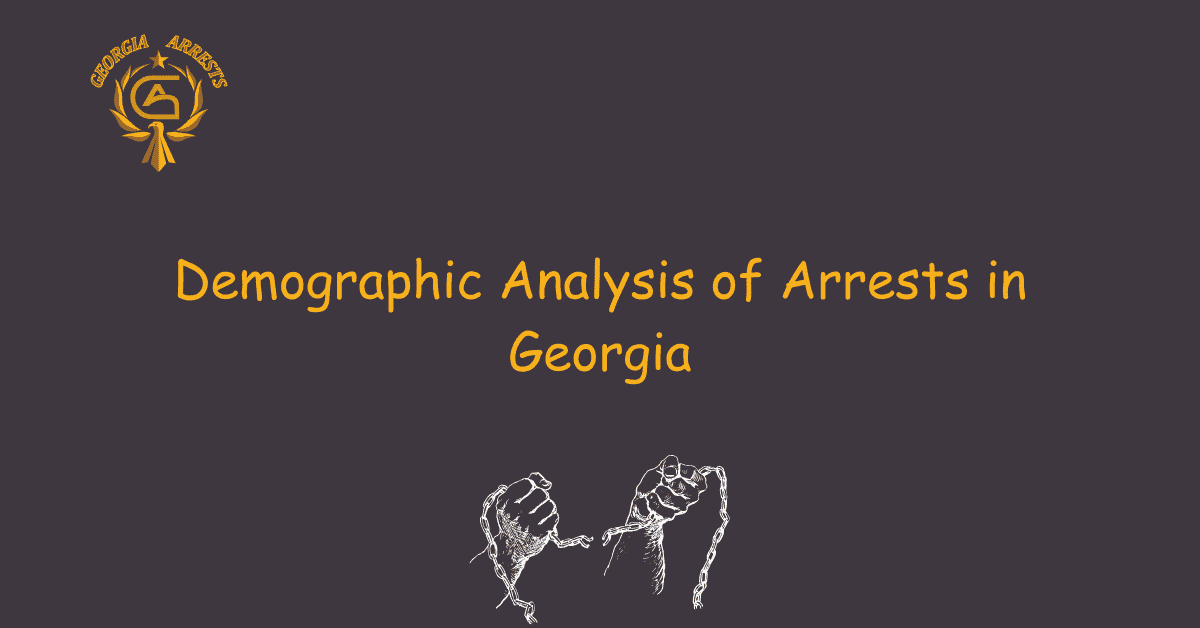Demographic Analysis of Arrests in Georgia
When it comes to understanding crime patterns and trends, analyzing arrest data is crucial. In the state of Georgia, this analysis provides valuable insights into the demographic characteristics of individuals who come into contact with the criminal justice system. By examining factors such as age, race, and gender, we can gain a better understanding of the social dynamics surrounding arrests in Georgia. This information is not only important for law enforcement agencies but also for policymakers, researchers, and communities seeking to address issues related to crime and justice.
Demographic Characteristics of Arrests by Age
Understanding the age distribution of individuals who are arrested in Georgia is vital for developing effective crime prevention strategies. By analyzing arrest data, we can identify trends and patterns specific to different age groups. This information helps law enforcement agencies target resources and interventions to address the needs of vulnerable populations, such as youth or older adults.
Demographic Characteristics of Arrests by Race
Race plays a significant role in the criminal justice system, and analyzing arrest data by race provides insights into disparities and biases that may exist. By examining the racial composition of arrests in Georgia, we can identify any disproportionate representation of certain racial groups. This information is crucial for policymakers and communities to address systemic issues and promote equal treatment under the law.
Demographic Characteristics of Arrests by Gender
Gender is another important factor to consider when analyzing arrest data. By examining the gender distribution of arrests in Georgia, we can gain insights into the involvement of males and females in different types of crimes. This information helps inform targeted interventions, support services, and policies that address the specific needs and experiences of different genders within the criminal justice system.
Comparative Analysis of Arrests by Age, Race, and Gender
Examining the intersectionality of age, race, and gender in arrests provides a comprehensive understanding of the demographic characteristics of individuals involved in the criminal justice system. By analyzing the combined effects of these variables, we can identify any disparities or biases that may exist. This analysis helps guide efforts towards promoting fairness, equity, and justice for all individuals, regardless of their demographic background.
Implications for Law Enforcement Agencies and Policymakers
The demographic analysis of arrests in Georgia has significant implications for law enforcement agencies and policymakers. By understanding the demographic characteristics of individuals who come into contact with the criminal justice system, agencies can tailor their strategies, resource allocation, and training to address the specific needs and challenges associated with different demographic groups. Policymakers can utilize this information to develop evidence-based policies that promote fairness, reduce disparities, and improve community safety.
FAQs
What is demographic analysis of arrests?
Demographic analysis of arrests refers to the examination and study of the various demographic factors associated with individuals who have been arrested in Georgia. This analysis includes factors such as age, gender, race, ethnicity, socioeconomic status, and geographic location.
Why is demographic analysis of arrests important?
Demographic analysis of arrests is important because it provides valuable insights into patterns and trends within the criminal justice system. By understanding the demographics of those who are being arrested, policymakers and law enforcement agencies can identify potential biases, disparities, and areas of improvement in the criminal justice system.
What are the main findings of demographic analysis of arrests in Georgia?
The main findings of demographic analysis of arrests in Georgia may vary depending on the specific study or research conducted. However, some common findings might include disparities in arrest rates based on race or ethnicity, disproportionate representation of certain demographics in specific types of crimes, and variations in arrest patterns across different geographic locations within Georgia.
How is demographic analysis of arrests conducted?
Demographic analysis of arrests is typically conducted by collecting and analyzing data from law enforcement agencies, court records, and other relevant sources. Researchers utilize statistical techniques to examine the relationships between demographic factors and arrests, often employing methodologies such as regression analysis or data visualization tools.
What are the implications of demographic analysis of arrests?
The implications of demographic analysis of arrests are wide-ranging. This type of analysis can shed light on potential biases and discrimination within the criminal justice system, leading to policy changes aimed at promoting fairness and equal treatment. It can also help identify areas where targeted interventions or resources may be needed to address underlying social or economic issues that contribute to arrest disparities.
How can demographic analysis of arrests inform policy and decision-making?
Demographic analysis of arrests can inform policy and decision-making by providing evidence-based insights into the impact of current practices and policies within the criminal justice system. Policymakers can use this information to develop strategies that promote equity, fairness, and improved outcomes for all individuals involved in the criminal justice system.







